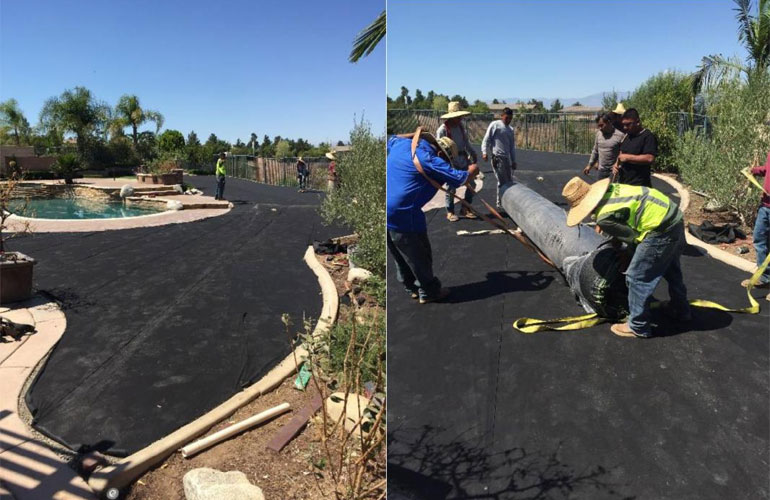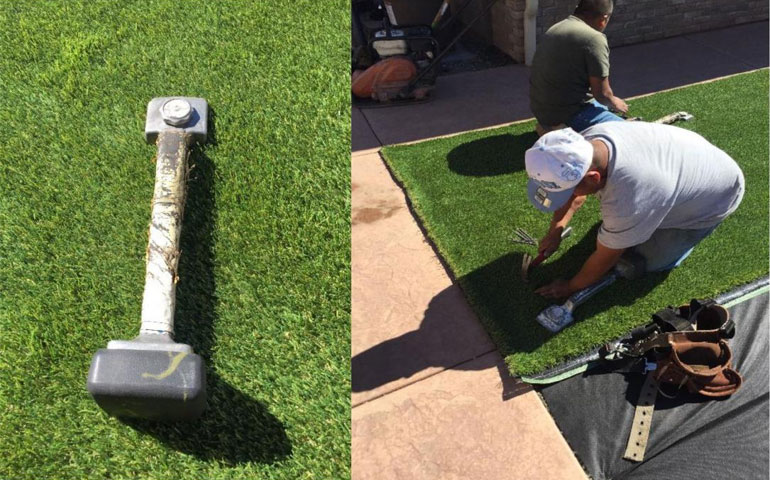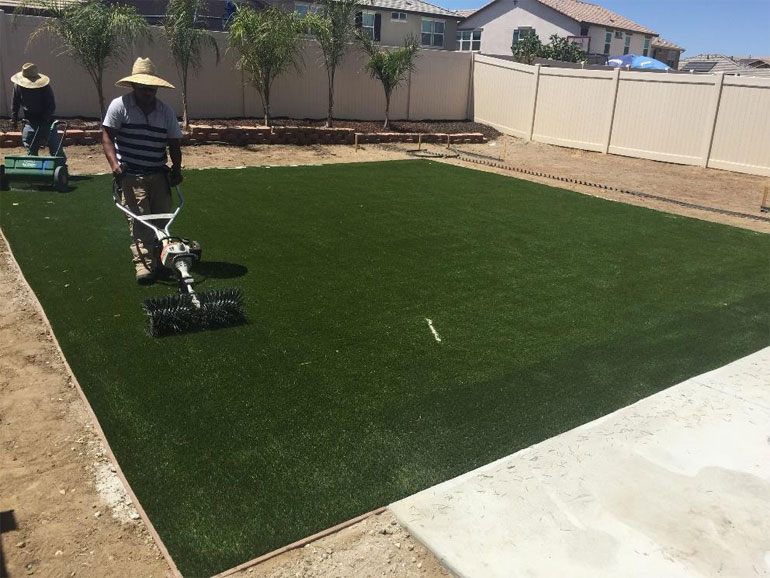Artificial grass, also known as synthetic turf or artificial turf, is a synthetic alternative to natural grass made from synthetic materials. It is widely used in sports fields, parks, yards, golf courses, and other locations to simulate the appearance and feel of natural grass. Artificial grass installation is the process of installing this synthetic material in a designated area, aiming to create an attractive, durable, and low-maintenance lawn.

1. Advantages of Artificial Grass
Artificial grass has several advantages that make it a popular choice as a substitute for natural grass. Firstly, it does not require regular watering, mowing, or fertilizing, reducing the demand for water and lowering maintenance costs. Secondly, artificial grass can maintain its green color and neat appearance in various weather conditions, be it sunny, rainy, or extremely hot. Additionally, it does not wear or turn yellow due to heavy usage or sports activities, making it an ideal choice for high-traffic areas.

2. Steps for Artificial Grass Installation
Step 1: Measurement and Preparation
Begin by measuring and marking the installation area to ensure an accurate calculation of the required rolls of artificial grass. Next, clear the installation area, removing weeds, rocks, and other debris. Ensure the ground is level and fill in any uneven spots to ensure a smooth surface for the grass to be installed.

Step 2: Laying the Artificial Grass
Unroll the artificial grass rolls onto the installation area, ensuring the texture and color of the grass are consistent. Trim any excess grass to make it fit snugly against the edges of the installation area.

Step 3: Securing the Grass
Use fixing nails to secure the grass onto the ground, making sure the grass does not move or create wrinkles. The nails should be evenly distributed to ensure a secure fit of the grass.
Step 4: Installing Infill
Spread infill material evenly on the artificial grass, such as rubber granules or sand. The infill helps maintain the grass’s upright position, stability, and resilience.

Step 5: Edging and Trimming
Trim the edges of the artificial grass to ensure they match the edges of the surrounding ground. Neatly trim the grass to achieve a natural and tidy appearance.
Step 6: Seaming
Use appropriate adhesive or glue to seam the rolls of artificial grass, ensuring a smooth surface with minimal visible seams.

3. Maintenance and Care of Artificial Grass
Regular Cleaning and Brushing: Routinely clean the surface of the artificial grass to remove debris and dust. Use a specialized brush to keep the grass looking fresh and maintain its resilience.
Avoiding Hot Objects: Prevent placing hot objects directly on the artificial grass to avoid melting or damaging the grass fibers.
Regular Check of Infill: Regularly inspect the infill and replenish it as needed to maintain the evenness and softness of the grass.
Avoid Chemical Contact: Refrain from exposing the grass to chemicals such as strong acids or bases to avoid damage to the grass surface.
Installing artificial grass requires careful planning and execution, but its aesthetics, durability, and low-maintenance features make it an ideal grass alternative. With proper installation and regular maintenance, artificial grass can provide a lush and comfortable outdoor space, adding vibrancy to your lifestyle.
Tags
Laying the Artificial Grass Advantages of Artificial Grass Artificial Grass Installation Securing the Grass Care of Artificial Grass